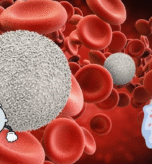Beauty is a complex and subjective concept that has been debated and explored by philosophers, artists, and scientists for centuries. It is a quality that can be perceived in various forms, including physical appearance, art, nature, and even abstract ideas. The notion of beauty is often associated with pleasure, attractiveness, and a sense of wonder, but its definition and significance can vary greatly across cultures, historical periods, and individual perspectives.
Physical Beauty
Physical beauty refers to the aesthetic appeal of a person’s appearance, including their facial features, body shape, skin tone, and overall physical attributes. Societal standards of physical beauty can influence how individuals perceive themselves and others, often shaping cultural norms and beauty trends. However, the perception of physical beauty is highly subjective and can be influenced by factors such as cultural background, personal experiences, and individual preferences.
The Subjectivity of Beauty
Beauty is often described as being in the eye of the beholder, highlighting its subjective nature. What one person finds beautiful may not be perceived as such by another. This subjectivity is influenced by various factors, including cultural norms, personal experiences, and individual tastes. For instance, some cultures value slender body types, while others prefer more voluptuous figures.
Beauty in Art and Nature
Beauty is not limited to physical appearance; it can also be found in art, music, literature, and nature. A breathtaking sunset, a majestic mountain range, or a beautiful piece of art can evoke feelings of awe and appreciation. The beauty of art and nature can be appreciated for its aesthetic value, emotional resonance, or ability to inspire and uplift.
The Psychology of Beauty
Research has shown that perceiving beauty can have a profound impact on our emotional and psychological well-being. Exposure to beautiful stimuli can reduce stress, improve mood, and increase feelings of happiness. The brain’s reward centers are activated when we perceive beauty, releasing dopamine and other neurotransmitters associated with pleasure and enjoyment.
Cultural Significance of Beauty
Beauty standards can vary significantly across cultures, reflecting the unique values, traditions, and histories of each society. For example, in some cultures, beauty is associated with modesty and humility, while in others, it is linked to extravagance and opulence. Understanding the cultural significance of beauty can provide insight into the values and norms of different societies.
The Impact of Media on Beauty Standards
The media plays a significant role in shaping beauty standards, often perpetuating unrealistic and unattainable ideals. The portrayal of beauty in advertising, fashion, and entertainment can influence how individuals perceive themselves and others, contributing to body dissatisfaction and low self-esteem.
Redefining Beauty
In recent years, there has been a growing movement to redefine beauty and promote a more inclusive and diverse definition. This shift emphasizes the importance of individuality, self-acceptance, and self-love. By celebrating different forms of beauty, we can work towards creating a more accepting and compassionate society.
Conclusion
Beauty is a complex and multifaceted concept that can be perceived in various forms. Its subjective nature and cultural significance highlight the importance of understanding and appreciating different forms of beauty. By recognizing the impact of media on beauty standards and promoting a more inclusive definition, we can work towards creating a society that values and celebrates individuality and diversity. Ultimately, beauty is a personal and subjective experience that can bring joy, inspiration, and fulfillment to



